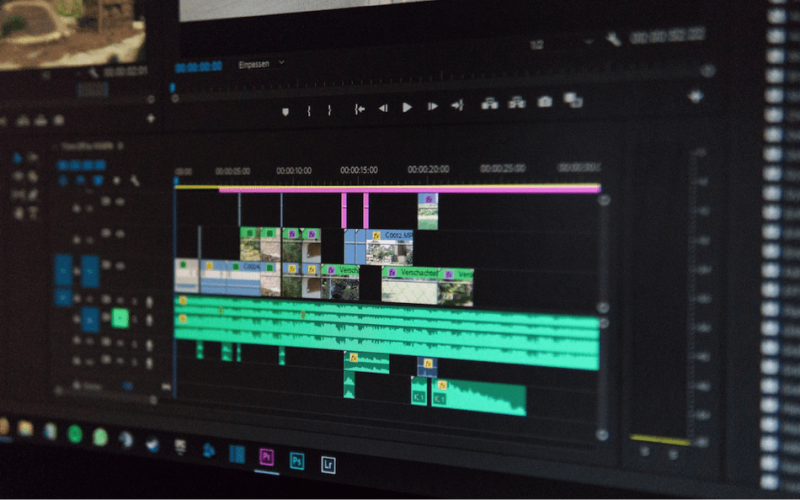
The Wheel Strategy can be seen as an enhanced variation of the conventional Buy & Hold approach. This strategy aims to invest regularly in top-notch stocks or index ETFs while gaining extra premiums.
Selling put options, holding stock, and selling covered calls up until the shares are called away or the trade is closed are all components of the options wheel strategy, which generates money. The wheel is a strategy that is gaining more and more popularity with investors who want to make money before and maybe during the ownership of stocks.
Technically, the wheel strategy is a stock acquisition plan and an income strategy. This is because the Wheel Strategy sells covered calls and cash-secured puts.
It is a long-term technique that enables investors to consistently buy the stock at a discount (using Cash Secured Puts), then, if they are assigned, buy the stock at the short put strike and begin selling covered calls to generate additional income.
Investors should be well-versed in selling Cash Secured Puts and Covered Calls before using the Wheel Strategy.
Also Read: What Is Covered Put Strategy: Comprehensive Guide
Contents
- What Is Wheel Strategy And How Does It Work?
- How to Utilize the Wheel Strategy to Trade?
- Understanding The Wheel Strategy Setup
- Example Of Wheel Strategy
- Who is the Wheel Strategy Intended For?
- Bottom Line
- FAQs
What Is Wheel Strategy And How Does It Work?
Stock option traders who sell cash-secured puts and covered calls in order to buy the stock at a discount and then sell at a premium use the wheel strategy, which is a two-step “Buy Low-Sell High” income strategy:
Step A:
An investor continuously sells cash-secured put options that are out-of-the-money (OTM) to earn option premiums.
The writer retains the premium if the option expires worthless on the predetermined expiration date. This process is repeated until the put eventually expires In-The-Money (ITM).
Once a put option expires in the money (ITM), it automatically exercises.
Bybit's USDC crypto options are “cash-settled,” in contrast to traditional equity options, where a physical transfer of ownership occurs when an option contract is exercised. No position is transferred in this case. Instead, the associated cash (USDC) position is credited or debited from the option seller's account.
Step B:
The investor now holds the underlying stock asset and sells out-of-the-money (covered) calls to make a steady profit.
There are two possibilities when a call option eventually expires in the money:
- You can sell the underlying cryptocurrency asset and return to selling a cash-secured put-in Step 1.
- Continue holding the underlying asset and earning money by selling covered calls.
How to Utilize the Wheel Strategy to Trade?
It's crucial to realize that if you use the wheel strategy, you should only sell put options on stocks you intend to hold at a price you feel comfortable purchasing.
If you were given stock, you'd want the price to rise over time to realize the gains and generate income from start-selling covered calls.

Selling a Put Options Wheel Strategy
The short put can be sold at any strike price. Many investors utilize the shot put as a proxy limit order to generate revenue and will frequently sell options at a price they believe is a crucial technical support level.
In this manner, you are compensated for initiating a long stock position in the underlying securities at a price at which you would be willing to buy shares.
If the underlying security's price exceeds the strike price of the short put option at expiration, the option contract is worthless, and you keep the premium paid for selling the put.
You can repeat the procedure indefinitely, adjusting the strike price up or down as your bias or market conditions alter.
Rolling the short put might be an excellent technique to postpone assignments while collecting more premium. If the stock price recovers, the premium raises profit or lowers the net stock cost basis if issued.

If the stock price drops below the strike price at the expiration time, you will be allocated 100 shares at the strike price. However, the net credit of any put options sold reduces the position's cost basis.
Selling Covered Calls
You'll start selling a covered call after you've been assigned shares. The short-call options likewise provide credit and generate income. Consider the sell-a-covered call options to be the monthly rent you pay for owning the stock.
For example, if you hold $100 worth of stock, you may sell a covered call report with a strike price of $105 per share. If you receive $5.00 for selling the call, your cost-basis for the trade is now $95.

If the stock price is moves above the call option's strike price at expiration, the shares are automatically sold at the strike price, and any additional gains are forfeited. As a result, sell-covered calls are often sold at or over a predetermined profit objective at which you are willing to sell the shares.
For example, if the stock is worth $110 at the expiration time, you must sell shares at the $105 strike price of the call option. You will keep the premium collected for selling the option, but any price appreciation above the strike price will be forfeited.
You can roll a call option like a short put to bring in more premium, extend the trade, and sell at a higher strike price.
Again, the premium received from selling options reduces the position's overall cost basis. The closer the short call's strike price is to the current stock price, the more money you will collect, but the option is more likely to expire.

Also, lengthier expiration dates have greater premiums but, once again, a more significant possibility that the option would expire in the money. These are the elements to consider while choosing a call option.
Also Read: What Is a Bull Call Spread?
Understanding The Wheel Strategy Setup
When using the options wheel strategy, the most crucial component is to ensure that your trading account has enough cash to pay the difference between strike and settlement prices if the option expires in the money. In this case, the account balance ensures that the short put is a “cash-secured put.”
Selling a put option is a high-risk strategy with limited upside (the premium received) and considerable challenges.

As a result, the strike price you select should represent a level at which you are willing to open a long-term position in the underlying asset.
Deciding Which Put to Sell
There are two main factors to be considered when selecting which put option to sell:
- How far should the strike price be out-of-the-money (below the current market price) to get the desired outcome (either expiring worthless or being exercised)?
- What should the option's Days-To-Expiration (DTE) be?
Selling a put with a strike price much lower than the current market price works better if the options expire worthless (collect premium). The lower the strike price, the less likely the option will expire in the money. The trade-off is that the collect option premium declines as you move farther out of the money.
If acquiring the underlying cryptocurrency asset is the goal, select a higher strike price that you think will expire in the money, but preferably not by a large enough margin to cancel out the premium received.

Prior to selecting an expiration date, think about how the option premium evolves over time. As the expiration date approaches, all options experience value loss (time decay). Using Theta, we can determine exactly how much value an option will lose.
As an option approaches expiration, time decay quickens; at expiration, the option has no time value. Theta is an options Greek representing the rate at which an option premium declines over time.
Deciding Which Call to Sell
The underlying asset serves as the “cover” for the short call in the same way that the account balance “secures” the shot put. You must keep the underlying crypto asset in your possession while the short-call contract is in effect.
The same criteria used to select which put into selling should be taken into account when determining which strike price:
- How much above the current market price should the strike price be for the option to achieve the desired outcome (either expiring worthless or being exercised)?
- How many days should the option have left before expiring?
Selling puts near-dated call options with between 30 and 40 DTE offers a good balance of value and flexibility, much like the put.

Example Of Wheel Strategy
The two main parts of the options wheel strategy example are:
- selling a put option with cash security
- selling covered calls if stock is assigned
The “wheel” can then be started again on the same or a different stock by returning to step 1 if you choose.
The premium paid for the options contract is credited when the short put option is sold. Put options are typically sold below the stock's current price, out-of-the-money.
Selling cash-secured put ensures there is enough capital to accept an assignment, should it be required. If you are not assigned, however, you can keep selling puts and earning a premium.\

You must be able to hold 100 shares per contract if assigned. Once the shares have been assigned, you will still be the owner of them and be able to sell covered calls above the stock price, which has been debited by the premiums from the sale of puts and covered calls.
Until the net stock cost basis is lower than the current stock share price, the covered calls may be sold repeatedly. The ideal scenario is for the stock price to rise while the short call expires out-of-the-money slightly. With each trade, you can keep all the premium and sell a different call option for the following expiration, lowering the position's net cost basis. After that, the shares may be withdrawn or sold for a profit.
Who is the Wheel Strategy Intended For?
The wheel strategy is appropriate for investors with a solid understanding of options trading.
Because crypto options are cash-settled, traders must remember to buy the underlying asset when a short put expires in the money and sell (if desired) when a short call expires in the money. As a result, the wheel strategy is best suited to more seasoned options traders.
Keep in mind that the wheel option is appropriate if you have a bullish bias in the short, medium, or long term and want to hold a stock (up to you to decide the timeframe). Initiating stock ownership by selling a put option enables you to make money while you wait for an assignment.

Of course, it's always possible that the stock won't result in a position and that you'll never acquire ownership of it. You will keep the premium received for selling the put, though.
Sweet Spot for Wheel Strategy
The ideal price at the expiration date reflects the “sweet spot” of an options strategy. A wheel strategy has multiple sweet spots, just like it has multiple breakeven points:
Cash-Secured Puts for Sweet Spot
The best settlement price when selling cash-secured puts is when the underlying equals the strike price. The seller keeps the premium even though the option contract expires worthless.
Sweet Spot for Covered Call
The sweet spot for a short covered call is when the option expires at the money, much like the sell cash-secured puts (expires worthless). The seller keeps the premium, and the underlying asset's value would be higher if the call were out-of-the-money when sold.

What Is A Strike Price?
The strike price of a call option refers to the price at which the option holder can purchase the security; that of a put option is the price at which the security may be sold.
Because you can exercise the option to purchase the stock for less than the market price and sell it right away at the higher market price, strikes that are lower than the market price are referred to as being in-the-money (ITM) for call options.
Similar to call options, in-the-money puts are those with strike prices higher than the market price, entitling the holder to sell the option for a higher rate than the current price. This feature gives ITM options intrinsic value.

What Occurs When a Wheel Strategy reaches the Strike Price?
The strike price designates the actual price at which an options contract can be used to purchase or sell the underlying security. An option holder may exercise their right to buy/sell shares at the strike price before the option expires.
However, they would only use the privilege if doing so would be profitable. It is illogical to exercise a call option, for instance, if a buyer has the right to buy shares of a company at $50/share and the stock is currently trading at $45.
Conversely, if the buyer tries to exercise the option, the call option seller will have to sell the underlying asset at the previously agreed strike price.
For instance, if a call option grants the buyer the right to purchase shares of a company at $50 per share and the stock of that company is currently trading at $55, the seller would be forced to sell those shares at $50 and would thereby find themselves in a losing position right away.

Anytime before expiration, assignment to option sellers is possible. If the option is close to expiry and deep in the money, the risk of assignment rises.
Bottom Line
The Wheel Strategy is fantastic for consistently producing semi-passive, steady, and reliable income with lower risk than many other option strategies and typically far outperforming the results of a straightforward Buy&Hold strategy.
In addition to capital gains, it aims to lower the cost basis of your favorite stocks by accumulating option premiums from the sale of cash-secured put and covered calls and dividend payments when appropriate.
This is not a scheme to get rich quickly that will make you millions of dollars overnight. Also, forget the adrenaline from day trading. The Wheel Strategy will need careful stock selection and a lot of patience, but when used properly, it will produce consistent returns in the long term.
FAQs
Does Wheel Strategy Work?
This wheel strategy can be useful in creating semi-passable steady income throughout the year, with fewer risks than most alternative options and generally exceeding the results from a simple buy-and-hold strategy.
How Much Money Do You Need to Trade the Wheel Strategy?
As a customer, you are given 100 shares of the contract, and you must have the right to buy 100 shares of the contract on that account. When selling an option that offers a $100 strike put, you need to keep at least $10,000.
Is the Wheel Strategy Bullish or Bearish?
Selling options on stocks you believe will rise in value is a key component of the Wheel Strategy, an options trading strategy that can help you increase your monthly income.

















